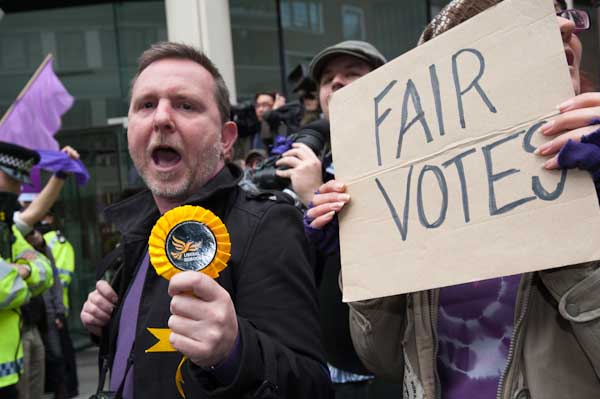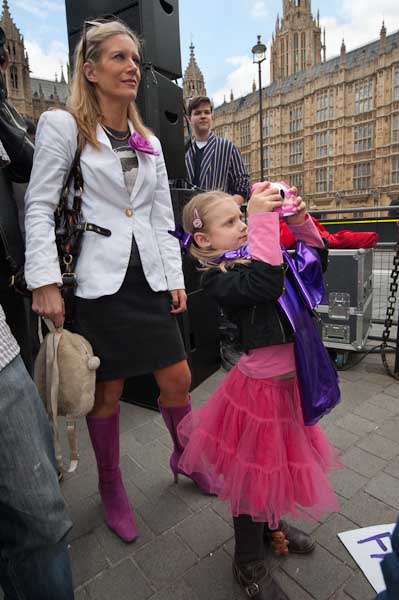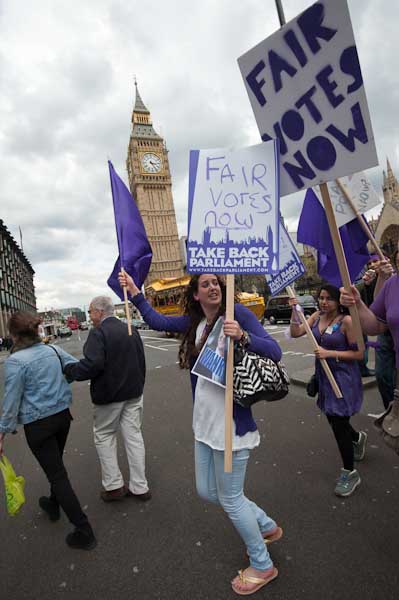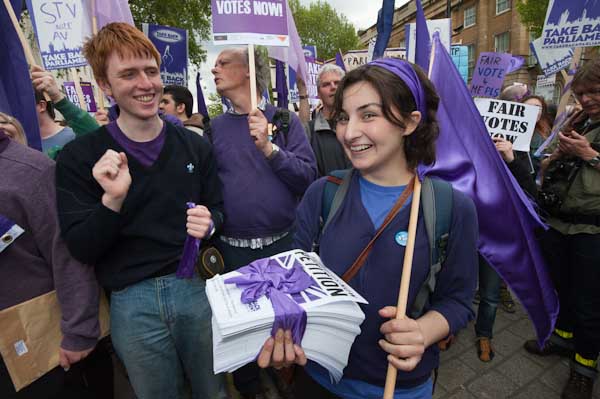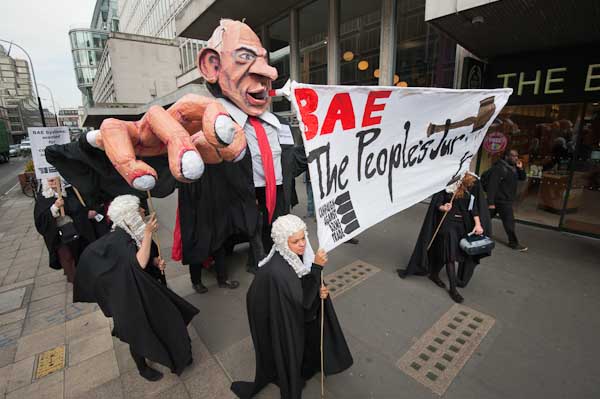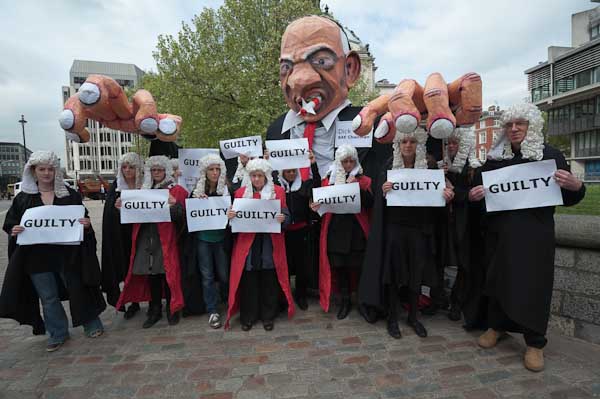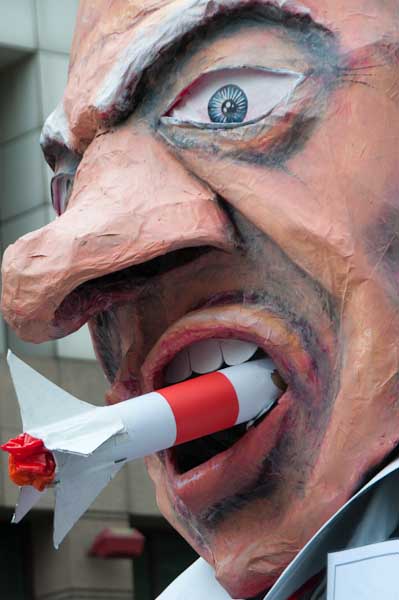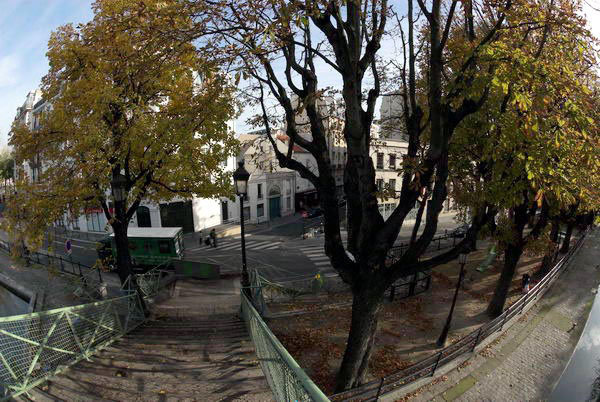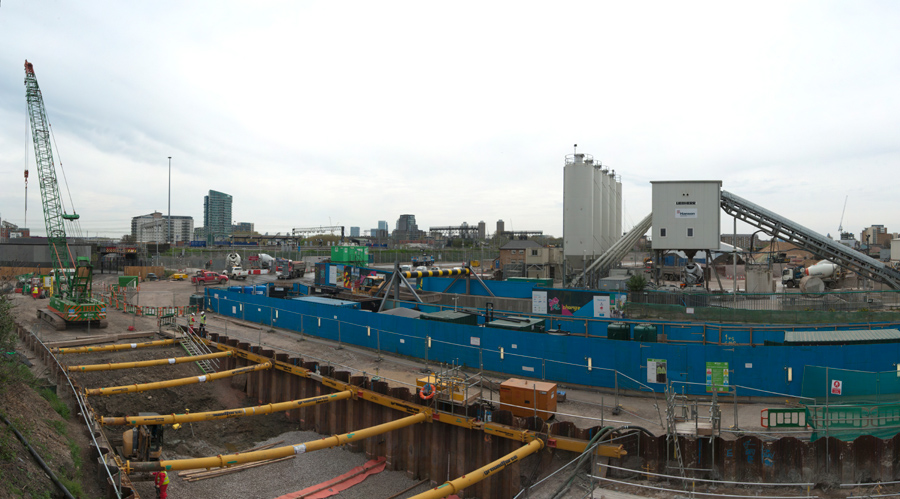May Day seems rather a long time ago now, but its been a busy couple of weeks since then (we had an general election here among other things) and it took me quite a while to get around to sorting out my pictures from the various events to put onto My London Diary.
My London Diary is an archive of much my work over the last ten or so years, added to regularly, but it isn’t meant as an instant news site, more a reference. Getting pictures on it right away is not a priority, though it’s important to me to put them there in time. But first of all I want to get them on news sites and if possible into publications. Sites that I regularly put my work on close to the event include Demotix and Indymedia.
May Day started for me with a fairly relaxed journey to arrive at Clerkenwell Green for noon, when the annual trade union and socialist march to celebrate International Workers Day gathers to march through London to Trafalgar Square.
One of the many minor failures of our labour governments have been not to make May Day a public holiday. Jim Callaghan in 1978 gave us instead a bank holiday on the first Monday in May, which is really more of a nuisance than a cause for celebration. Of course every few years coincides with May Day (as in 2000, 2006, and unless we get a changes before then, in 2017) and there are years such as this when May Day falls at the weekend. But most years when I was still in full-time employment, May Day was a normal working day for me.
May Day this year started bright and sunny, and Clerkenwell Green – long since covered by paving and asphalt with just a few trees to add a touch of green – was pretty full with hundreds of people in mainly red uniforms from the various communist parties, as well as many more variedly dressed trade unionists and socialists and a smallish group of anarchists in black.
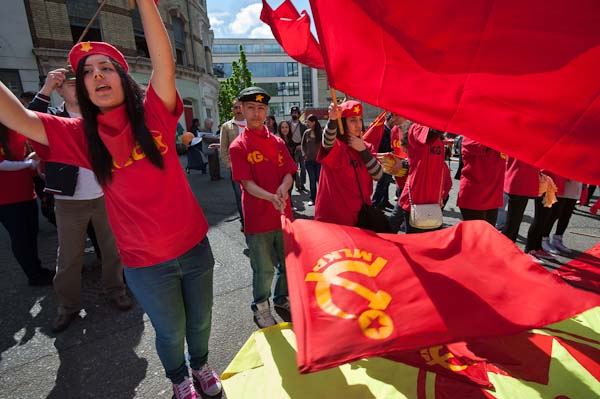
The Communist Youth Organisation (KGÖ) is the youth wing of the Turkish Marxist-Leninist Communist Party (MLKP)
The sun shines directly into most of the square, giving bright highlights and areas of deep shadow, so flash fill becomes essential for most pictures. Red isn’t my favourite colour photographically, although possibly digital copes a little better than film, but still it seems to lose detail far too readily and give large blocks of featureless colour, even though the highlights aren’t blocked. At least with digital images it’s fairly easy to do something about it, and “burning in” the over-bright reds usually solves or reduces the issues.
With the large areas of red (and yellow in some places) you do get a lot of red light as you can see in the faces in the picture above. But it’s part of the picture and usually adds to it.
Although photographically the problems are those I’ve coped with many times before, this May Day I faced another and fortunately less usual picture. When I had to visit my doctor a few years ago with a knee problem, one of the things he commented on was how flexible my knees were, and I think it’s something that comes from being a photographer. All of the time when I’m taking pictures I’m busy trying to get the camera in exactly the right position, flexing my knees, going just a little lower or higher and occasionally dropping down on them to the ground. Generally it must be pretty healthy exercise for the knees, though I do sometimes end up with a few bruises, and virtually every pair of trousers I own suffers from ‘photographers knee‘ with a worn area halfway up both legs.
A short while after starting taking pictures at Clerkenwell I dropped down on my knees to photograph a group of kids, and there was a loud splitting sound. When I got up it was to find a split down the front of my trousers from close to my waist halfway down to my knees.
It was an embarrassing moment and for a while I was at a loss what to do about it. Fortunately I had a fairly respectable pair of boxer shorts on underneath, but I still felt rather naked. I solved the problem by taking off the lightweight waterproof jacket I was wearing and tying the sleeves around my waist so that the jacket hung down my front to just above my knees and continued working.
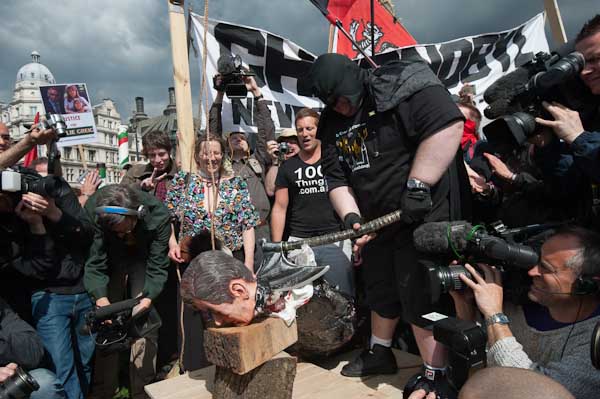
George Brown is beheaded
It’s the only day that I’ve spent photographing wearing a skirt, and it was a busy one, covering the march and then going on to a May Day election carnival in front of the Houses of Parliament where effigies of David Cameron and Nick Clegg were hung, George Brown beheaded and then disembowelled and Nick Griffin thrown to be torn to pieces by the London mob (all good clean fun) as well as dancing around the maypole and more.
Perhaps the most interesting thing about my state of dress was that nobody seemed to notice, even people who know me well enough to comment, at least until I pointed it out to them. Of course there was quite a lot going on, including at one point a couple of naked male protesters in the trees next to the statue of Churchill.
I was busy photographing the maypole, where I’d almost got myself tied to the pole by the dancers, just ducking out under the ribbons as they closed in when I noticed a few people moving towards the corner of the square, where the Space-Hijackers ‘Spoil Your Ballot Bus’ had just appeared, and quickly joined a group of photographers taking pictures of it. But almost immediately I decided we weren’t in the right place, and ran round to the other side of the bus so I could get pictures with Big Ben behind it.
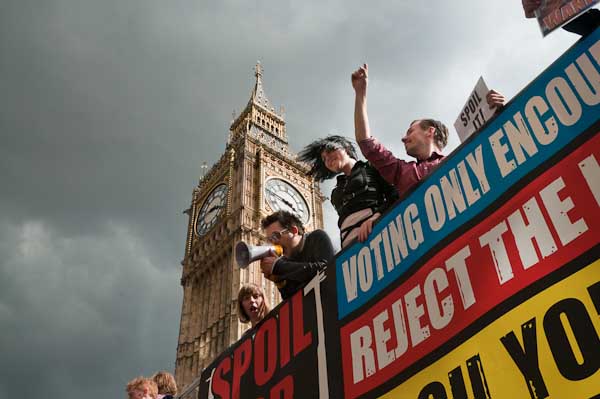
To my surprise the other photographers didn’t follow me.

The sky was getting a very dark gray, almost black, and I was a little worried it might rain, as my waterproof jacket was already in use. Fortunately by the time I needed it I was already in the dry, in a street that runs underneath all of Waterloo station’s 22 platforms, photographing the start of the ‘Rave Against the Machine‘ there, and after I’d taken some pictures I could make my way to the station and take the train home. It was quite a relief to be able to change my trousers when I eventually got home.
